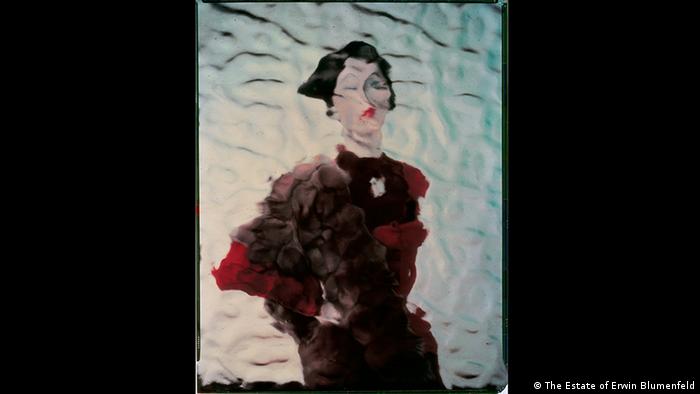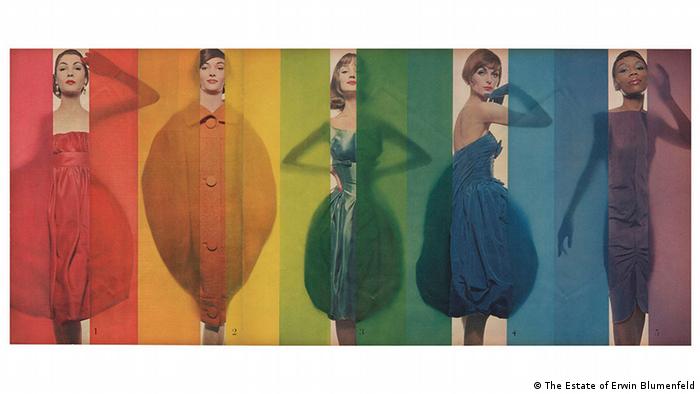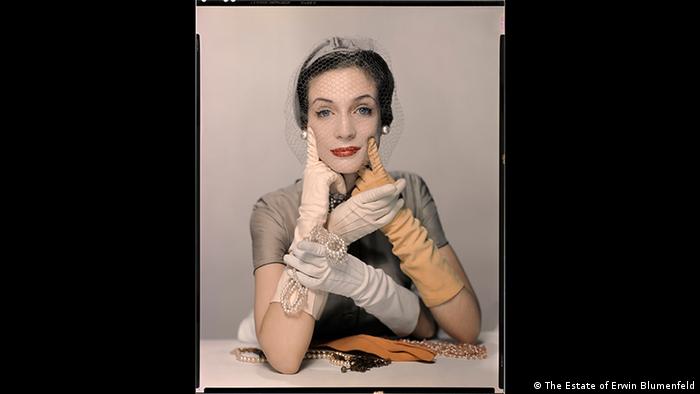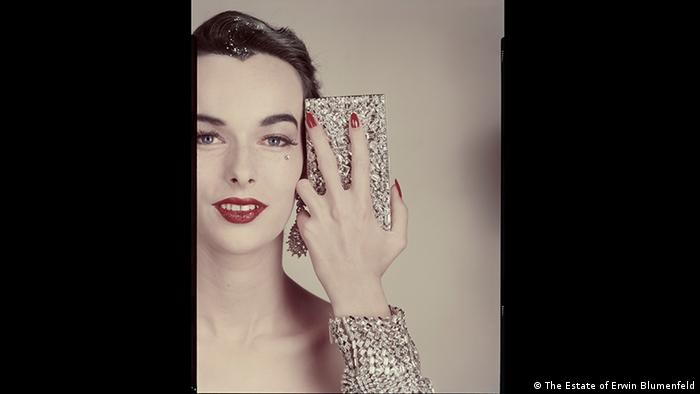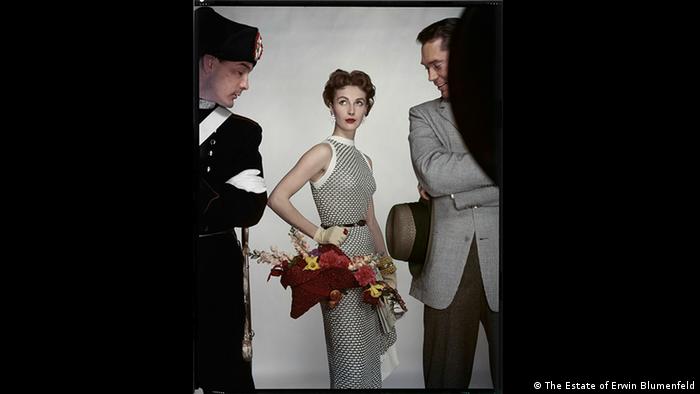The Craft of photography was to him a little. Erwin Blumenfeld was the Dada artists inspired and developed fashion photography into an art form. The FOAM in Amsterdam, is showing his color photographs.
Blumenfeld was an imaginative Visionary. And he openly admitted that he “smuggled art in his Work”. When he made his photographs, he was often into mischief.
The friendships with the trendy Dada-artists of his time left its traces in his artistic handwriting as a photographer: He experimented a lot. Also in his life.
Early love of photography
Erwin Blumenfeld was born on 26. January 1897 born in Berlin in a bourgeois Jewish family. The father had the Schim and walking stick business, “Jordan & Blumenfeld. His first camera, the son was already with ten daring, he experimented with oblique self-portraits.
As Erwin was 16 years old, his father died. The family was on a hit bankruptcy. Him only the teaching remained a classic ladies ‘ tailor. Incidentally, the young man met, however, on a regular basis with Dadaists and writers in the “Cafe of the West” and in the Bars of the capital of the Reich.
In 1917, Blumenfeld was drafted into the German army. On the Western front, he worked as an ambulance driver and an accountant to a box car-brothel and was awarded the Iron cross for bravery. The attempt to desert, a little later, failed; Blumenfeld was arrested and imprisoned.
Experiments in the dark chamber
After the end of the 1. World war tried to Blumenfeld as an artist, made collages and drawings and mixed at the Dutch Dada movement. He was largely self-taught, but was curious on everything New and Unknown. Mirjam Kooima, curator of the exhibition, explains in this DW Interview that his “learning by doing” had begun in the early 1920s in Amsterdam.
In 1922, he opened in the Kalverstraat, the popular shopping mile of the city, a private business for leather goods, the “Fox Leather Company”. “Here, he also took Portraits of his customers and took advantage of a dark chamber in the rear part of the store to Develop the photos,” says Kooiman. “He experimented a lot with the Negative, and that marked his whole way of working.”
Blumenfeld used his Portrait orders to the limits of photography to explore. In contrast to the true-to-life Portraits of August Sander (“people of the 20th century. Century”) or the photo-journalistic snapshots of Henri Cartier-Bresson, he explored the expressive possibilities of his photographs better in the dark chamber. “The final images show strong contrasts and exposure, which produces a very dramatic, almost evil effects,” says Kooiman.
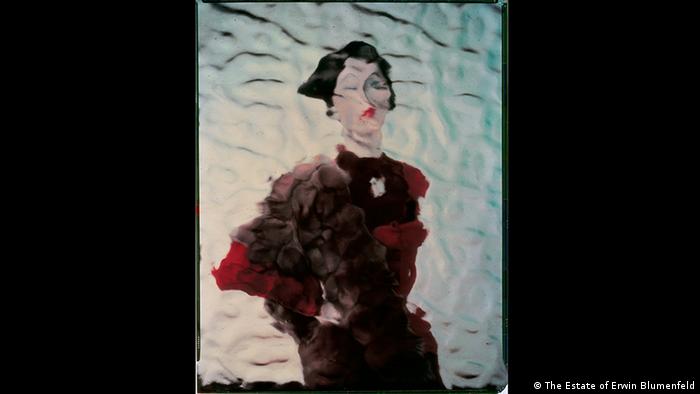
To recognition mode alienated: photography by Erwin Blumenfeld (1950)
Blumenfeld pushed all experimental photographic techniques such as double exposure, solarization, and chemical effects of the surface treatment. “By zurechtbog the rules of the technique, he was able to ultimately achieve this ultimate effects in his pictures,” says the curator. Blumenfelds years in Amsterdam were his most productive time – at least as a photographer, because the leather business went bankrupt.
Fresh start as a photographer in Paris
To take again a new start, he moved in 1936 with his family in the French capital, Paris. In Amsterdam, Blumenfeld Lena Citroen had married the niece of a good friend, the Dadaist Paul Citroen. The two had three children. In Paris, the Blumenfelds seemed to have a promising future, because the head of the family quickly got lucrative contracts, He shot Portraits of famous artists such as Henri Matisse, the dancer Josephine Baker, or the stylish fashion photographer, Cecil Beaton. Beaton was very impressed with Blumenfelds experimental photo-art and gave it to the French “Vogue”.
But everything collapsed when the Nazis France occupied. Erwin Blumenfeld was interned due to his Jewish origin immediately. For two years he remained as a prisoner in the Camps at Le Vernet, and Catus. In 1941 managed to escape him, and to emigrate with his family to New York.
“The really Outstanding Blumenfelds biography is that all these difficulties have adversely affected his life, his artistic creativity in any way, or reduced,” says curator Kooiman in the DW-Interview. On the other hand, it also explains the darker side of his work. “He had seen too much and experienced to take the American Glamour as a matter of course. He played with it, but with a sense of humour, without it ever depressing.”
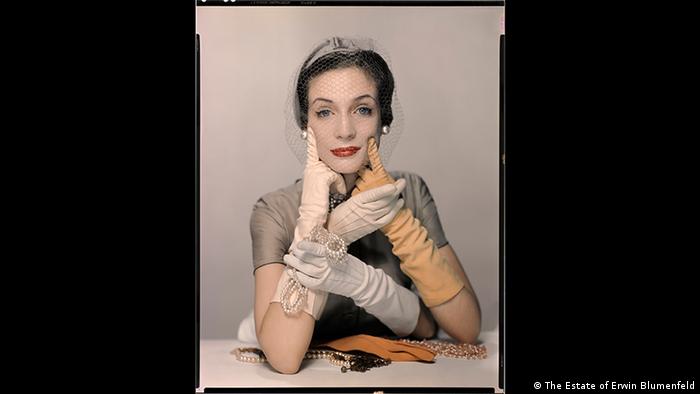
Irritating: Blumenfeld played with surreal Details in his Work
The New York Years
Shortly after his arrival in New York, Erwin Blumenfeld began work with a new contract for the American fashion magazine “Harper’s Bazaar”. Later, a regular cooperation with the “American Vogue”. And flowers brought color into his work; in Europe, he had photographed previously, only black-and-white. Soon, he was regarded as one of the hottest photographers in the international world of fashion, because he had a special eye for the female form and the artistic Arrangement of the fashion.
The European Dadaists such as Man Ray or George Grosz, with whom he was to be life-long friends, and the Surrealists, too, had inspired him over the edge of the plate to the pure craft of photography, look. In his Work, heads and bodies of the Models reflected the quantity of a novel composition. On one of his most famous Cover photos of the “Vogue” you will see only eyebrows, lips and a birthmark on the face of the photographed model, as an artistic graphic.
Avant-Garde Perspective
“Blumenfeld was one of the first,” explains curator Kooiman, “the not realized, is that the fashion photography is to show the latest fashion, but to create iconic images.” Celebrities and Hollywood stars such as Marlene Dietrich, Audrey Hepburn and Grace Kelly were in his Studio on Central Park in New York, to scan. In the 1950s, Blumenfeld was one of the highest paid photographers in the world.
Almost 50 years after his death – he died in 1969 in Rome – produce his artistic photographs still awe and Wonder before his avant-garde vision. The current exhibition “Erwin Blumenfeld in Colour” is up to 14. To see April 2019 at the FOAM in Amsterdam.
